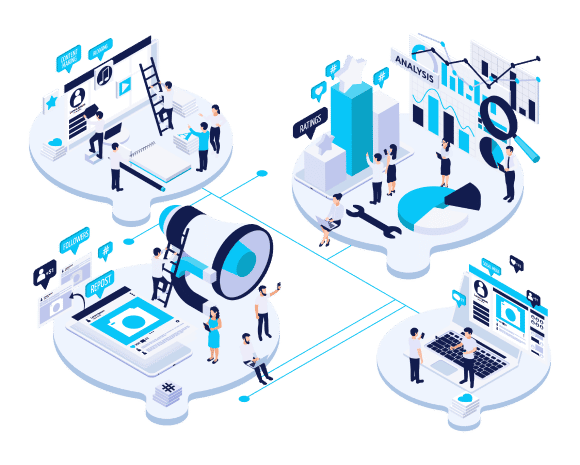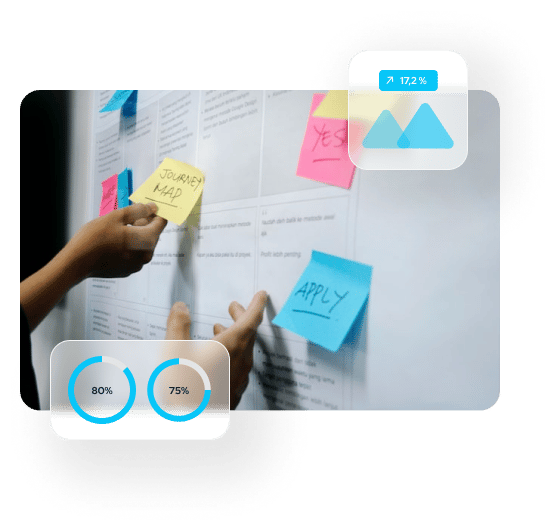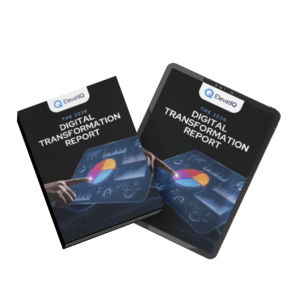Designing Sticky User Experiences and Transforming Customer Experience
Through the structured approach of performing user studies, design low and high-fidelity wireframes, and converting design ideas into reality.

Why do eCommerce Brands Need
Experience Design and Customer Experience Transformation?
Brands that have not gone through a structured process of mapping customer journeys and identifying customer personas struggle with engagement and conversion rates. They might also struggle with the sticky factor of customer experience and suffer from loyalty and customer experience score issues.
Improving User Experience
User experience is ever-evolving. Technologies change. Consumer preferences change. Search engine algorithms get updated. And that all may drive changes to the user experience. The brands that may not have updated their websites fall short of providing the customer experience today’s consumers expect.
Superior Customer Experience
Customer experience issues might exist when delivery might not be consistent with the original messaging. As well as due to poor delivery. Or not receiving what they expected with their order. These issues, over time, compound into sales performance problems. Especially true for brands using disparate systems issues.
Boosting Conversion Rate
Conversion rate is highly correlated with customer experience. Brands that don’t have a streamlined customer journey and information architecture struggle with the conversion rate. And they need to make substantial design changes to improve the conversion rate.
Increasing Customers’ LTV
The lifetime value of the customer is directly correlated with the consistent brand experience. The experience they receive through their engagement with your brand over time. Customer experience changes lead to customer churn, reducing the customers’ LTV and increasing customer acquisition costs.
Aligning Brand Story
Poor design leads to a poor brand story. Branding experience requires design elements to be aligned with the branding elements. Legacy sites that evolve over time lose the touch of branding due to multiple hands touching the sites. The consistent branding experience requires a complete rethinking of design and branding.
Improving Searchability and Findability
The design issues could impact the searchability and findability of products on the site. Brands with legacy web architecture are likely to have significant design issues. These issues not only impact the conversion rate. But they might also impact the reduction in net-new visitors to your site.
Want to learn more about why independent consultants have a higher success rate with experience design and Cx transformation?
Our Case Studies for
Experience Design and Cx Transformation

ECommerce Supply Chain Transformation With ERP Selection
Download the eCommerce Supply Chain transformation case study and learn how LockNLube transformed its inventory and supply chain challenges by consolidating over 20 systems. As well as by creating business, process, information, and system architecture as they prepare for the next phase of their growth.

Omnichannel eCommerce Customer Experience Transformation
Download the omnichannel eCommerce customer experience case study and learn how fashion retailer AKIRA built a digital roadmap and managed stakeholder expectations to transform its processes and systems to explore newer business models such as buy-online-pickup-in-store and curbside pickup.

ERP Optimization and Integration Architecture Development
Download the ERP optimization and integration architecture development case study and learn how Work Sharp fixed their broken ERP implementation that caused customer service issues and improved Supply Chain planning.
Our Methodology
for Experience Design and Cx Transformation
The process starts with the assessment of current issues and KPIs. Then it goes through the detailed analysis and discovery of different systems involved to discover the underlying causes. Post discovery, the solution phase goes through a series of solutions with their pros and cons. And then finally, implementation and monitoring of the changes to ensure that the solution is able to deliver on the original KPIs.

1 Assessment
This is a short phase to understand the drivers for KPIs’ poor performance. During this phase, several options may be identified. The options are then presented to the client to follow the desired option given budget and timeline.
3Implementation
Once a solution is agreed upon by all the stakeholders, then the implementation will start. Substantial changes required to improve the conversion rate? Might require multiple sprints to deliver the necessary changes. The implementation may also include testing rounds before it gets released to the live site.
2Detailed Discovery
This phase digs deeper into the 1st option and finds different potential solutions. If the solution requires making changes to the code or to the website, it might go through a series of wireframes such as low and high fidelity. As well as performing financial and technical feasibility of the solution.
4Optimization
Post implementation, the KPIs are continuously monitored to see if the proposed changes deliver results. If they don’t measure up to the original expectations, the alternate options discovered in step 1 are explored. The cycle continues until the brand can hit the KPIs.
Ready to learn how we can help With Experience Design and Cx Transformation?
Our Other
eCommerce Services
ElevatIQ eCommerce services include digital strategy roadmap, channel analysis, product profitability analysis, customer journey mapping, UX and conversion issues, eCommerce platform optimization, system integration, eCommerce platform selection, re-platforming, and contract negotiations.
Digital Commerce Business Model Transformation
This service helps eCommerce brands enable business models such as D2C, buy-online-pickup in-store, buy-online-return-in-store, or subscription-based business models.
Headless Commerce Strategy and Architecture
This service helps eCommerce brands with headless architecture enablement, whether you need a custom headless solution or integration with monolithic platforms such as SAP Hybris and Salesforce Commerce Cloud. Or utilizing a newer breed of headless platforms such as commercetools, Spryker, or VTEX.
E-commerce Solution Architecture
This service helps in setting the right foundation for your architecture, whether your architecture might contain just one platform or several, including PIM, DAM, DXP, and CMS. ElevatIQ can help define the architecture you need to enable customer experience.


